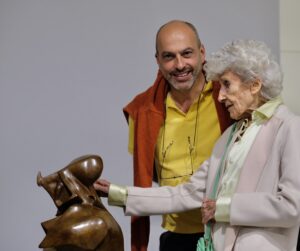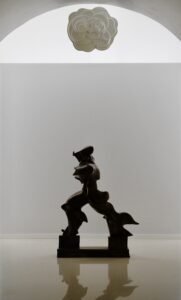
More than 100 years after his death, the futurist artist Umberto Boccioni (Reggio Calabria, 1882 – Verona, 1916) was celebrated in the East, at the Italian Cultural Institute in Tokyo and at the Nakanoshima Art Museum in Osaka, with two conferences curated by Professor Alberto Dambruoso, one of the leading experts on Boccioni (he edited the artist’s general catalog together with Maurizio Calvesi, published in 2016). The most iconic sculpture of Futurism – Unique forms of continuity in space (1913) by Umberto Boccioni – coming from the collection of Roberto Bilotti Ruggi D’Aragona, will be exceptionally exhibited in Rome, Saturday 1 October at 6 pm, in the new space of the Galleria La Nuvola in Via Margutta 41.
The symbolic work of the 20 cents, declared “of particularly important interest” by the Ministry of Cultural Heritage with decree no. 77/2013, will be presented with a conference by the art critic Alberto Dambruoso and accompanied by his new catalogue, Boccioni. Unpublished works (Maretti Editore), together with some projections regarding insights into the artist and sculpture.
«The subject consists of a half-anthropomorphic, half-mechanical figure which, like the piece of a gear, is devoid of some “anatomical” parts, whose continuous alternation of solids and voids determines the body in its material motions.
At the basis of the futurist movement, the famous work embodies the “beauty of speed” through plastic dynamism, in which “the form that expresses its continuity in space” is fixed”, explains gallery owner Alice Falsaperla who organized the event.
«He resembles a man launched at breakneck speed into space, or into the future. In this race, the shapes of the body in contact with the air deform, creating a network of pleats in the muscle bands, the so-called “fins” which have undoubtedly been the object of study for their aerodynamic shape by the major European car manufacturers since the 1930s”, says Dambruoso, leading us to reflect on the modernity that, even after 100 years, the work extraordinarily retains.
Photography by Domenico Flora















